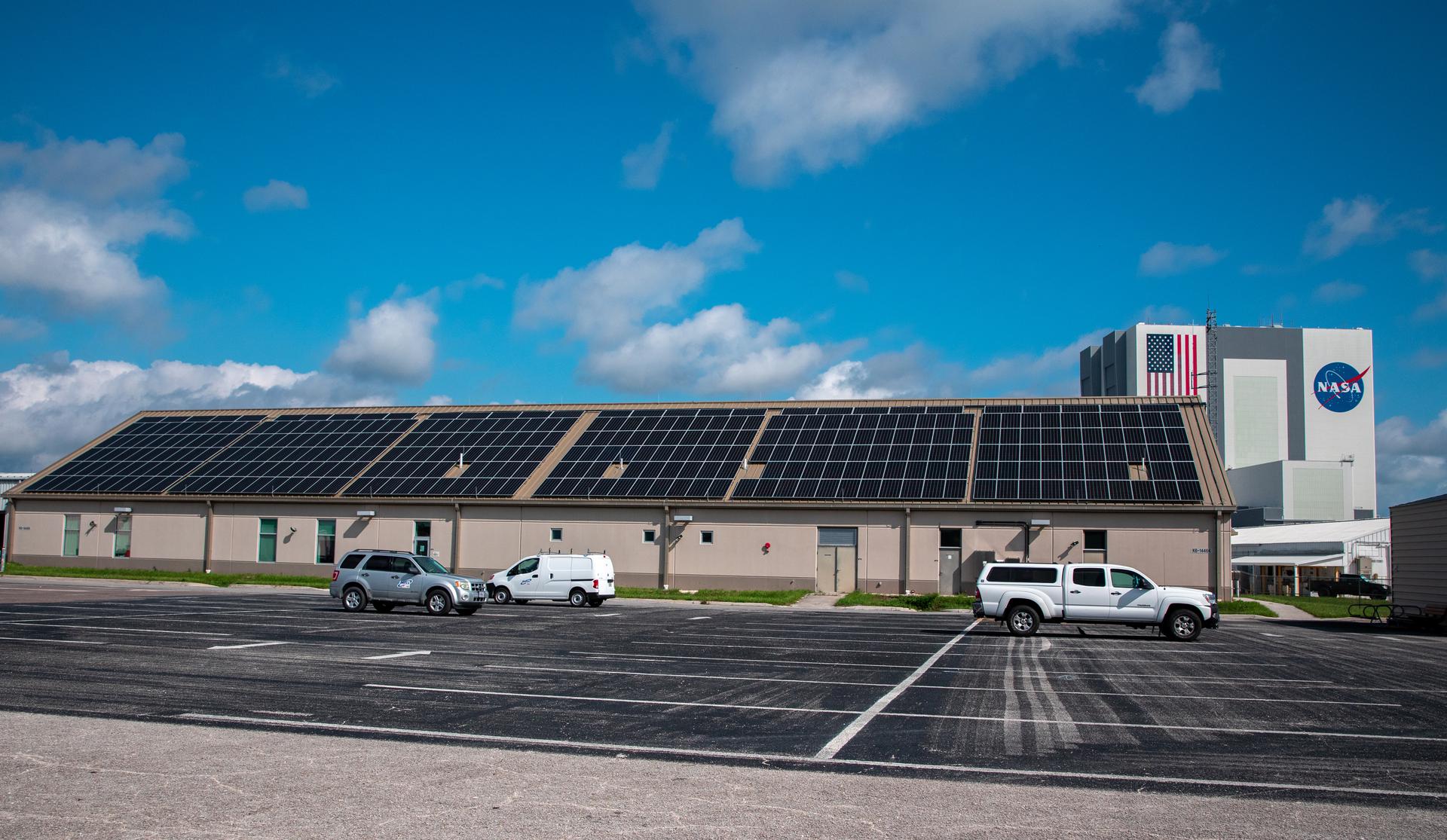
By Danielle Sempsrott
NASA’s Kennedy Space Center
Sitting on more than 140,000 sprawling acres, NASA’s Kennedy Space Center in Florida requires a large amount of energy to keep its multiple facilities running day and night. Members of Kennedy’s Energy and Water Conservation Program are continuously searching for ways the center can conserve resources, lower utility costs, and reduce the demand placed on energy and water. One way they’ve done so is harnessing energy from the Sun – something available aplenty in the Sunshine State.
“We tend to go for solar here at KSC because we have a lot of sunlight, but we’re not discounting other ideas,” said Jennifer Hill, energy and water conservation program manager. “No idea is off the table as far as energy conservation.”
One solar initiative that’s now paying dividends began in 2016, when teams completed an assessment of all rooftops at Kennedy to narrow down which ones would qualify for the addition of solar panels. Determining criteria included the building’s positioning in relation to the Sun, along with the type and the condition of the roof.
“We found ones that were viable for solar, that did not need a roof replacement, and that already had a tilt built for solar, facing south,” said Cory Taylor, an energy, water, and computer science specialist at Kennedy. “And the most viable candidate was the EMF (Electrical Maintenance Facility).”
Installation began in August 2019, and just six months later, the panels were up and running, generating enough energy to supply the facility. Taylor noted the maximum monthly energy the EMF has drawn in the past few years is 71 kilowatts (kW), but the crew installed panels capable of producing 125 kW. The additional capacity supports the building’s daily load as well as the energy needed for consumption at nighttime and those cloudy days when the panels cannot draw from the Sun.
Story continues below the video.
With these solar panels in place, the EMF is now deemed a “net positive” facility, meaning it produces more energy than it consumes. In addition to reducing Kennedy’s electricity costs, these panels also help reduce air emissions. And they are doing so at the bargain cost of $1.98 per watt for the panels and installation – a price Taylor said is better than many residential jobs for which he has been quoted.
Funding for this and other projects of the Energy and Water Conservation Program come from Enhanced Use Lease (EUL) agreements in place at Kennedy – revenues received from companies that lease property at the multi-user spaceport. Some of these include SpaceX, Boeing, and Florida Power & Light (FPL).
“Through these leases, we’ve retained 65% of the revenues here at the center for reinvestment into revitalization, maintenance, and real property upgrades,” Hill said.
Some leases even benefit surrounding communities. The FPL EUL agreement, for example, includes the lease of 491-acres of land across from Kennedy’s Visitor Complex for constructing the Discovery Solar Energy Center. Although not directly powering anything on Kennedy, the site is expected to generate enough energy to power 15,000 Central Florida homes.
Some other conservation initiatives at Kennedy include LED lighting, mechanical system upgrades, the use of more efficient water fixtures, a one-megawatt and two-megawatt solar site on the southern side of the spaceport, and another two-megawatt solar site currently in design for the north end of Kennedy.
The program is paying off. Through different initiatives, Kennedy has been able to collectively reduce utility costs by about $11.9 million since 2003, when the program first started tracking the center’s energy use and costs. According to Nick Murdock, environmental management branch chief, this effort has allowed the agency to allocate those funds elsewhere and, in turn, has helped further NASA’s missions and goals.
“I feel that we are charged with a very important mission within the branch: to protect and conserve the environment and our resources, and to work toward a more sustainable future,” Murdock said. “To actually see these initiatives being put in place, not only at the EMF but through other goals and projects that we’re leading and have in mind, is really great.”




























